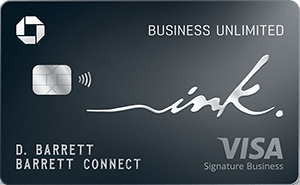What Is the ‘Chase Trifecta’?
The Chase trifecta is a strategic combination of three Chase credit cards that can boost your rewards-earning potential.

Many or all of the products on this page are from partners who compensate us when you click to or take an action on their website, but this does not influence our evaluations or ratings. Our opinions are our own.
People who get a charge out of squeezing maximum value from their credit cards are probably familiar with the term "Chase trifecta." It refers to a strategic combination of three Chase-branded rewards credit cards that accomplishes two things:
It significantly increases the amount of rewards you earn from spending.
It allows you to redeem those rewards for significantly greater value.
Many Chase credit cards earn rewards in a currency called Chase Ultimate Rewards® points. These points are at the center of the trifecta strategy because they can be transferred from one card to another. Depending on which card you use, where you use it and when, you could earn as many as 10 Ultimate Rewards® points per dollar spent. Points have a base value of 1 cent apiece, but certain Chase cards allow you to redeem them for travel at a higher value, up to 1.5 cents per point.
So by strategically spending, transferring and redeeming, you can get an effective rewards rate of up to 15% on certain purchases. By comparison, using a single credit card for every purchase typically nets you an overall rate of 1.5% to 2%.
Here’s what to know about the Chase trifecta system.
Cards that earn Chase Ultimate Rewards®
Multiple Chase credit cards will work in a trifecta combination, as long as they earn Chase Ultimate Rewards® points. You can combine points from your own cards, or transfer your earnings to another member of your household.
Note that while some of these cards advertise "cash back," their rewards still come in the form of Chase Ultimate Rewards® points, which are worth a penny each when redeemed for cash. On such a card, "5% cash back" on a $100 purchase is awarded as 500 points, equal to $5.
Consumer credit cards
Chase Freedom Flex®: It has an annual fee of $0 and earns 5% cash back on up to $1,500 in combined purchases each quarter on bonus categories that you activate (1% back after). It also earns 5% back on travel booked through Chase, 3% back at restaurants and drugstores, and an unlimited 1% on all other non-bonus-category spending. Through March 2025, you'll also earn 5% cash back on Lyft rides. Point value when redeemed for travel booked through Chase: 1 cent each.
Chase Freedom Unlimited®: It has an annual fee of $0 and earns 5% back on travel booked through Chase, 3% back at restaurants and drugstores, and an unlimited 1.5% on all other spending. Through March 2025, you'll also earn 5% cash back on Lyft rides. Point value when redeemed for travel booked through Chase: 1 cent each.
Chase Sapphire Preferred® Card: It has an annual fee of $95 and earns 5 points per dollar spent on travel booked through Chase, 3 points per dollar spent on dining, select online grocery purchases and select streaming services, 2 points per dollar spent on all other travel and 1 point per dollar on all other spending. Through March 2025, you'll also earn 5 points per dollar spent on eligible Peloton purchases (with a maximum earning of 25,000 points) and on Lyft. Point value when redeemed for travel booked through Chase: 1.25 cents each.
Chase Sapphire Reserve®: It has an annual fee of $550 and earns 10 points per dollar spent on hotels and car rentals booked through Chase and on Chase Dining purchases, 5 points per dollar spent on flights booked through Chase, 3 points per dollar spent on travel and dining and 1 point per dollar on all other spending. Through March 2025, you'll also earn 10 points per dollar spent on eligible Peloton purchases (with a maximum earning of 50,000 points) and on Lyft. Point value when redeemed for travel booked through Chase: 1.5 cents each.
The original Chase Freedom® card still exists, but is closed to new applicants. It can be product-changed to a Chase Freedom Flex® if you call Chase and make the request.
Business credit cards
Ink Business Unlimited® Credit Card: It has an annual fee of $0 and earns an unlimited 1.5% cash back on all purchases. Through March 2025, you'll also earn 5% cash back on Lyft rides. Point value when redeemed for travel booked through Chase: 1 cent each.
Ink Business Cash® Credit Card: It has an annual fee of $0 and earns 5% cash back on the first $25,000 in combined purchases at office supply stores and on internet, cable and phone services each account anniversary year; 2% cash back on the first $25,000 in combined purchases at gas stations and restaurants each account anniversary year; and 1% on all other spending. Through March 2025, you'll also earn 5% cash back on Lyft rides. Point value when redeemed for travel booked through Chase: 1 cent each.
Ink Business Preferred® Credit Card: It has an annual fee of $95 and earns 3 points per $1 on the first $150,000 spent in combined purchases on travel, shipping purchases, Internet, cable and phone services, and on advertising purchases made with social media sites and search engines each account anniversary year. All other spending earns an unlimited 1 point back. Through March 2025, you'll also earn 5 points per dollar spent on Lyft rides. Point value when redeemed for travel booked through Chase: 1.25 cents each.
While Chase also issues multiple co-branded credit cards — meaning cards that are partnerships between Chase and a merchant, airline or hotel group — those cards earn rewards only within the partner's brand, not Ultimate Rewards® points.
Benefits of carrying multiple Chase cards
Increased rewards potential
A Chase trifecta can give you the most bang for your travel-rewards-earning buck. Consider this combination, which incorporates three different kinds of rewards cards:
The Chase Freedom Flex®, a card with rotating and fixed bonus rewards categories.
The Chase Freedom Unlimited®, a card that earns at least 1.5% cash back on all purchases, plus more in specific categories.
The Chase Sapphire Reserve®, a tiered rewards card.
It's just one possible card combination, but it's an effective one because it covers all possible spending ground. You use the bonus category card on spending that earns 5% back each quarter; you use the tiered card on travel and dining; and you use the 1.5% cash-back card to earn a solid rate on everything else. (You can also use the Chase Freedom Flex® or Chase Freedom Unlimited® on dining, as all three of these cards earn the same rate.)
Be aware that when evaluating credit card applications, Chase, like other issuers, takes into account how many cards you've applied for and opened recently. Read more about Chase's so-called 5/24 rule here.
Here's an example of what that might look like:
Rewards category | Annual spending in that category | Card used: Rewards rate | Rewards earned |
|---|---|---|---|
Restaurant dining | $2,500 | Chase Sapphire Reserve®: 3X | 7,500 |
Travel and transit | $3,000 | Chase Sapphire Reserve®: 3X | 9,000 |
Department stores | $1,000 ($250 per quarter) | Chase Freedom Flex®: 5X for 1 quarter | 1,250 |
Chase Freedom Unlimited®: 1.5X for 3 quarters | 1,125 | ||
Groceries | $3,000 ($750 per quarter) | Chase Freedom Flex®: 5X for 1 quarter | 3,750 |
Chase Freedom Unlimited®: 1.5X for 3 quarters | 3,375 | ||
All other spending | $2,000 | Chase Freedom Unlimited®: 1.5X | 3,000 |
TOTAL REWARDS USING TRIFECTA: | 29,000 | ||
vs. total rewards using a single card for all purchases: | |||
Chase Sapphire Reserve® ($5,500 at 3X, $6,000 at 1X) | 22,500 | ||
Chase Freedom Unlimited® ($2,500 at 3X, $9,000 at 1.5X) | 21,000 | ||
Chase Freedom Flex® ($1,000 at 5X, $10,500 at 1X) | 15,500 | ||
Greater redemption value
With any rewards currency, spreading spending across multiple cards can help you earn more. But to get outsize redemption value via the Chase trifecta, it has to be the right combination of cards. Making your points go further is the end goal.
Three credit cards in the Chase ecosystem offer enhanced value when you’re redeeming your rewards to book travel through the Chase portal.
The Chase Sapphire Preferred® Card and the Ink Business Preferred® Credit Card give you a 25% boost in value per point.
The Chase Sapphire Reserve® offers a 50% boost in value. In the example above, you could redeem those 29,000 points for $290 in cash — or you could use them to book airfare or hotels via Chase and get $435 in value instead.
You must choose either the Chase Sapphire Preferred® Card or the Chase Sapphire Reserve®. Chase has a "one Sapphire card" rule that prevents you from applying for one version if you already hold the other. You're only eligible for a new Sapphire card if it's been more than 48 months since you received a new cardholder bonus.
What to consider before diving in
Your break-even point
The Chase Sapphire Preferred® Card, the Chase Sapphire Reserve® and the Ink Business Preferred® Credit Card all carry annual fees, so if you don't think you'll earn enough back in points to outweigh your cost of carrying one of them, the Chase trifecta isn't a good system for you.
Your ability to juggle multiple cards
The Chase trifecta isn't a low-maintenance setup. You'll have to remember which card to use in which specific scenario, and that can get complicated — especially when you consider that the Chase Freedom Flex® requires you to opt in to new bonus categories every quarter.
Your tolerance for booking exclusively through Chase's travel portal
With a qualifying card like the Chase Sapphire Preferred® Card or the Ink Business Preferred® Credit Card, you can just cash out your points for a penny each, and you can also transfer your points to multiple travel partners, where you might find even better value. But to get the 25% or 50% boost, you must book via Chase and only Chase.
Eligibility for another Chase card
Chase's 5/24 rule means that if you've opened five credit cards within the past 24 months — any five cards, not just Chase cards — you probably won't be eligible for another Chase card.
Chase also has a "one Sapphire card" rule, which means that if you already have one flavor of Sapphire card, you can't get another. (You can't, for example, have both the Chase Sapphire Preferred® Card and the Chase Sapphire Reserve®.)
In general, it's best to wait a minimum of six months between each new line of credit you're seeking. Not only can multiple hard inquiries drag down your score, but it can also be a red flag to issuers.
Temptation to overspend
Here's the caveat with chasing credit card rewards: It's only a good idea if you pay your balances on time and in full every month. That's because rewards credit cards have high APRs, and if you carry a balance, that double-digit interest will eat away at your rewards.
More about Chase Ultimate Rewards®
1.5%-5%
Cashback$250
1x-5x
Points100,000
Points1%-5%
Cashback$200
Find the right credit card for you.
Whether you want to pay less interest or earn more rewards, the right card's out there. Just answer a few questions and we'll narrow the search for you.







